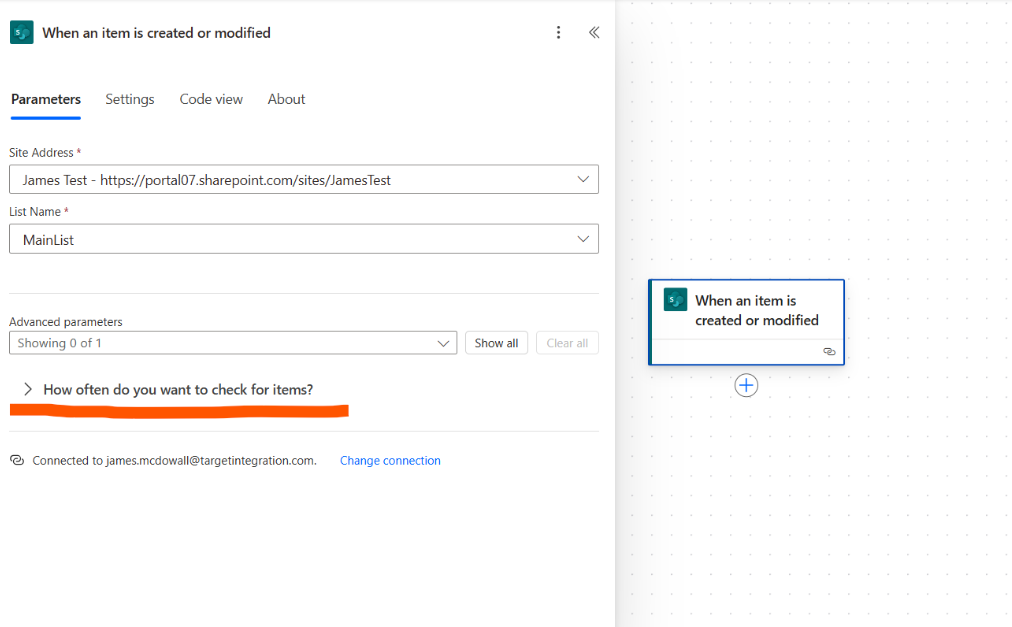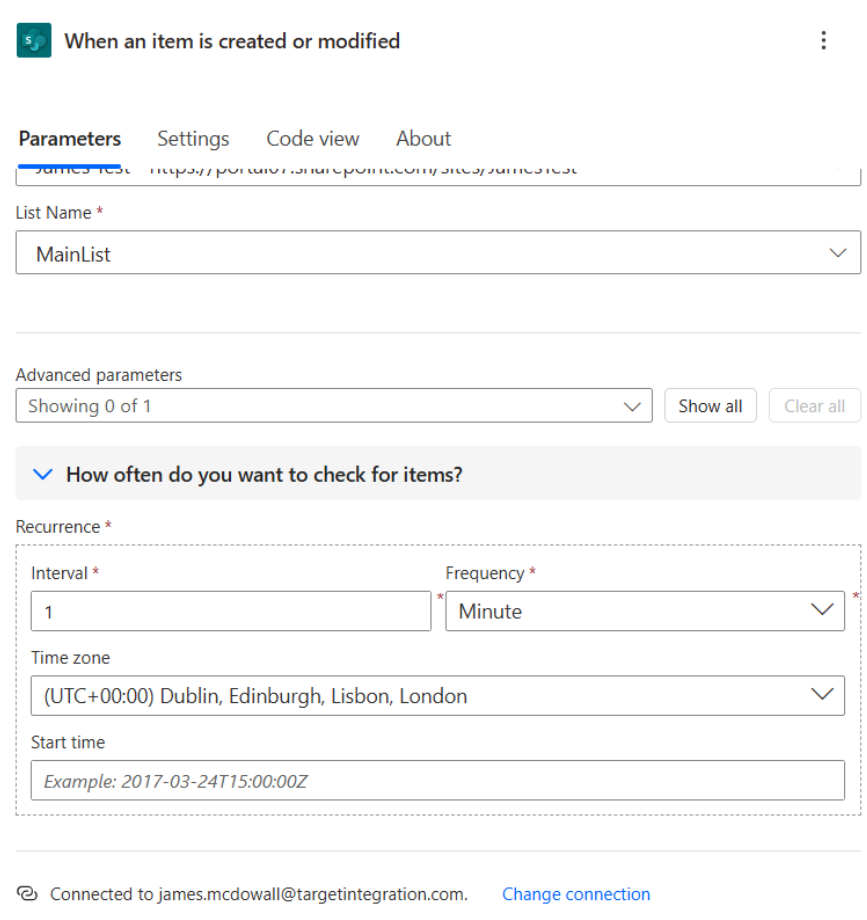As organisations continue to streamline operations using digital tools, automation has become a vital component of modern working practices. Microsoft Power Automate, part of the Microsoft Power Platform, plays a key role in this movement by enabling users to create workflows that automate repetitive tasks across Microsoft 365 services.
One of the most common integrations in Power Automate is with SharePoint — particularly when automating list or document library tasks. However, many users quickly notice that not all triggers behave the same. Some workflows appear to start instantly, while others (especially those triggered by SharePoint) seem to take longer than expected.
In this blog, we’ll explore how Power Automate SharePoint triggers work, why they can feel slow compared to other connectors, and how you can take control of trigger frequency to tailor your flows to your organisation’s specific needs.
What Are Power Automate SharePoint Triggers?
Power Automate includes a range of SharePoint triggers that detect changes in SharePoint Lists or Document Libraries and initiate flows accordingly. These triggers are essential for automating business processes such as approvals, notifications, record creation, or document handling.
Common SharePoint triggers include:
- When an item is created
- When an item is modified
- When an item is created or modified
- When a file is created (properties only)
- When a file is created or modified (properties only)
- When an item or file is deleted
- For a selected item (manual trigger within SharePoint)
Each of these triggers listens for a specific type of change and starts the flow based on that condition. However, SharePoint triggers operate differently from some other Power Automate connectors — particularly in how they handle timing.
When you select that trigger to enter the Site and List Name details you will see an option at the bottom where you can set how often you would like the flow to check for items. Basically, a built-in scheduled trigger.
The default setting is every 1 minute but you can change that to suit your needs.

The frequency you set this to is entirely dependent on your requirements. You may want a short recurrence time if it is critical for the flow to run as soon as any changes are made. You may be content to let it run on a more spaced-out interval to prevent unnecessary flow runs.
Whatever is right for you, this option gives you more control over your SharePoint workflows.

Why Do SharePoint Flows Seem Delayed?
If you’ve used other connectors in Power Automate, such as Microsoft Forms, you may have noticed that flows start almost instantly after an action is taken — for instance, when someone submits a form. This is because certain connectors use webhook-based triggers, which receive a direct notification from the source system when a change occurs.
By contrast, SharePoint triggers typically use polling, which means Power Automate checks SharePoint at regular intervals to see if anything has changed. If a new item has been added or modified, the trigger activates. This approach is more resource-efficient, especially for larger organisations with many users and automated processes, but it can result in perceived delays.
Customising Trigger Frequency in SharePoint
The good news is that Power Automate gives you the ability to control how frequently it checks SharePoint for changes. This is particularly useful if your business processes are time-sensitive or if you’re looking to reduce the number of unnecessary flow runs to manage usage and licensing.
Let’s focus on one of the most commonly used SharePoint triggers:
“When an item is created or modified”
When you add this trigger to a flow and select your Site Address and List Name, you may notice an option at the bottom to adjust the frequency. This setting allows you to define how often Power Automate should check for changes in the SharePoint list — essentially acting as a built-in scheduler.
Default Setting
- Frequency: Every 1 minute
By default, Power Automate will poll SharePoint once per minute to detect any new or updated items. This frequency ensures that workflows respond quickly but can lead to a high number of runs over time.
Custom Frequency
You can configure the polling interval to suit your requirements:
- Every 5 minutes
- Every 15 minutes
- Every hour
- Once per day
This gives you control over performance, responsiveness, and the overall efficiency of your flow.
How to Adjust the Trigger Frequency
To change the trigger frequency:
- Add your SharePoint trigger (e.g. “When an item is created or modified”) to the flow.
- Click the ellipsis (…) in the top-right corner of the trigger card.
- Select Settings.
- Under Trigger Conditions, adjust the Interval and Frequency fields.
Here’s how the settings look:
Use Case Examples
To understand how to best apply these settings, let’s walk through a few common use cases:
1. Immediate Task Allocation
If your SharePoint list is used to log support tickets, and you need to notify a team member immediately when a ticket is added or updated, a 1-minute interval may be appropriate. This ensures near real-time response, improving customer service performance.
2. Scheduled Reporting
For internal reports that summarise activity over a day or week, there’s no need for constant monitoring. A daily frequency will suffice, allowing the flow to trigger once every 24 hours, compile data, and send it to stakeholders.
3. Document Review Processes
In situations where documents are updated throughout the day, but action isn’t needed until the end of the working day, an hourly or 4-hour interval may be the right balance.

Optimisation Tips for SharePoint Triggers
Customising frequency is only part of the puzzle. To build efficient and scalable flows, consider the following best practices:
1. Use Trigger Conditions
Power Automate allows you to specify conditions under which the trigger should actually run. This avoids executing flows unnecessarily.
For example, only run the flow if a specific field value is updated:
plaintext
CopyEdit
@equals(triggerOutputs()?[‘body/Status’], ‘Submitted’)
2. Add Filters
When querying SharePoint lists with large numbers of records, apply filter queries to reduce the volume of data retrieved.
plaintext
CopyEdit
Status eq ‘In Progress’
3. Use Delay or Do Until Actions
For complex flows that depend on external input, it’s more efficient to use Delay or Do Until actions instead of frequent polling. This avoids running the flow repeatedly without progress.
4. Review Flow Runs
Periodically check how many times your flow has been triggered. If you notice a high number of runs with no meaningful outcome, it may be time to adjust the trigger frequency or conditions.
5. Consider Licensing Implications
Flows that run more frequently can consume your allocated runs quickly, depending on your Power Automate licence. Reducing the frequency of triggers can help you stay within your plan limits and avoid incurring additional costs.

The Power of Polling: Control and Flexibility
By understanding and configuring the frequency settings in SharePoint triggers, you can significantly enhance the responsiveness and efficiency of your automated processes. Whether your focus is speed, cost management, or operational simplicity, Power Automate gives you the flexibility to tailor your workflows to your exact needs.
It’s important to strike the right balance. Running flows too frequently may lead to unnecessary runs and performance overhead. On the other hand, running them too infrequently might delay critical business actions. The key is to align trigger frequency with the importance and urgency of the task at hand.
Final Thoughts
Power Automate’s integration with SharePoint is powerful, and once you gain control over how often your flows run, the possibilities become even greater. With just a few adjustments, you can avoid delays, improve process reliability, and ensure your business automations are working for you — not the other way around.
If you’re not yet taking advantage of this feature, we highly recommend reviewing your current flows and considering whether the default frequency aligns with your operational needs. It could be the difference between an effective automation strategy and one that silently drains your resources.
Need Help with Power Automate?
If you’re unsure how to get started or want expert advice on building more efficient SharePoint workflows, our consultants are here to help. We’ve helped organisations of all sizes make the most of Microsoft 365 and Power Platform by designing smarter, faster, and more cost-effective automation.
Get in Touch Today:
📞 Call us: 01865 794009
📧 Email: hello@alberon.co.uk
🌐 Visit: alberon.co.uk
Ready to Improve your Business Productivity
Get a trusted partner to navigate your digital transformation. With Alberon, you can ensure a smooth transition, clear communication, and peace of mind.
